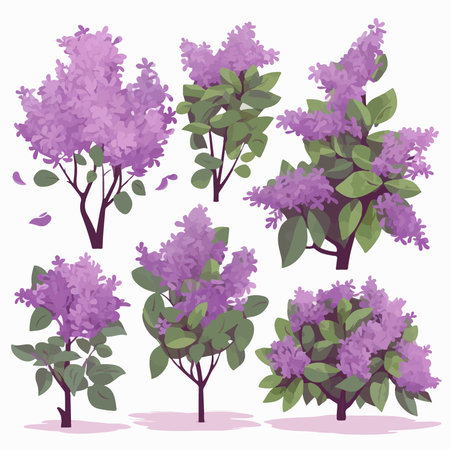Introduction to Seasonal Colour in British Gardens
There’s something truly magical about the ever-changing tapestry of colour that unfolds across British gardens throughout the year. From the delicate pastels of spring bulbs to the fiery hues of autumn leaves, seasonal colour has long played a central role in shaping the atmosphere and experience of gardens across the United Kingdom. Historically, gardeners and designers have been captivated by this natural rhythm, using it as both inspiration and a guiding principle in their creations. The importance and charm of seasonal colour go far beyond mere aesthetics; they reflect deeper cultural values, a connection to nature’s cycles, and even a sense of national identity. As we explore the evolving role of seasonal colour in British garden design, we’ll discover how different eras have celebrated, manipulated, or even subdued these shifting palettes—each leaving its own distinctive mark on the landscapes we cherish today.
Early Inspirations: Medieval and Tudor Gardens
To understand the rich tapestry of seasonal colour in British garden design, we must journey back to the medieval and Tudor periods—times when gardens were both practical and a source of delight. Medieval herb gardens, often found within monastic walls or the grounds of manor houses, played a vital role in daily life. Here, native herbs such as sage, thyme, and lavender were cultivated not just for their culinary and medicinal uses but also for their ability to provide bursts of colour throughout the changing seasons.
Tudor knot gardens, emerging later during the 16th century, brought a new artistic flair to planting schemes. These intricate designs used clipped box hedges to create geometric patterns, with brightly coloured flowers and scented herbs filling the spaces between. The Tudors placed great emphasis on symmetry and order, but they also delighted in vibrant displays that evolved with the seasons. Seasonal planning was essential; gardeners would carefully select native and newly introduced plants that could ensure continual interest from spring bulbs to summer blooms and autumnal berries.
| Garden Feature | Medieval Herb Garden | Tudor Knot Garden |
|---|---|---|
| Main Purpose | Practical use (culinary, medicinal) | Aesthetic display (patterned beauty) |
| Key Plants | Sage, thyme, lavender, mint | Box hedge, marigold, primrose, sweet william |
| Seasonal Colour Approach | Continuous harvesting; subtle seasonal shifts | Planned succession of colourful blooms and foliage |
| Cultural Significance | Linked to daily life and self-sufficiency | Status symbol; reflection of Renaissance artistry |
This early approach laid the foundations for today’s beloved British gardens. Through a thoughtful selection of native species and an appreciation for nature’s cycles, medieval and Tudor gardeners created living tapestries that encouraged families—and indeed all generations—to interact with and learn from their surroundings. Their legacy continues to inspire us to seek out seasonal delights in our own plots, reminding us that every plant has its moment to shine across the year.

3. Georgian Grandeur and the Influence of the Landscape Movement
As British gardens entered the Georgian era, a sweeping transformation took place that still whispers through today’s landscapes. Gone were the rigid parterres and formality of earlier periods; in their place emerged an embrace of naturalistic planting and grand, flowing vistas inspired by the rolling English countryside. This period was profoundly shaped by visionaries such as Lancelot ‘Capability’ Brown, who reimagined aristocratic estates into living paintings where colour, scale, and movement danced together through the seasons.
The shift towards more naturalistic garden design meant that beds of regimented blooms gave way to broad lawns, gentle lakes, and carefully positioned clumps of trees. Seasonal colour was no longer confined to geometric patterns; instead, it was woven subtly into the landscape itself. Swathes of spring bulbs—daffodils, crocuses, and bluebells—were planted beneath groves, their cheerful hues appearing like a secret gift as winter retreated. In summer, wildflower meadows and mixed shrubberies offered ever-changing palettes that echoed the surrounding fields and hedgerows.
This approach fostered a sense of discovery for families wandering these expansive gardens. Children could chase butterflies amidst long grasses or collect conkers under ancient oaks, while parents marvelled at how each turn revealed a fresh harmony of colour. The landscape movement valued not just dramatic vistas but also intimate encounters with nature’s seasonal rhythms—a philosophy that continues to inspire gardeners across Britain today.
4. Victorian Innovation: Exotic Plants and Bold Schemes
The Victorian era marked a turning point in British garden design, as an insatiable curiosity for the exotic swept across the nation. With the expansion of the British Empire and global plant hunting expeditions, gardeners gained access to a dazzling variety of new species from around the world. This influx of botanical treasures inspired a vibrant, ever-changing tapestry of seasonal colour, fundamentally altering the character of gardens great and small.
One of the most distinctive hallmarks of Victorian horticulture was the introduction of elaborate bedding displays. Gardeners carefully arranged annuals—often sourced from far-flung lands—in geometric patterns that changed with each season. The result was an ever-evolving spectacle, where bold swathes of scarlet geraniums, golden calceolarias, and cobalt lobelias burst into life each summer, only to be replaced by a fresh display the following year.
Victorian Bedding Plants: A Snapshot
| Plant | Origin | Seasonal Appeal | Typical Use |
|---|---|---|---|
| Geranium (Pelargonium) | South Africa | Summer brilliance, striking reds & pinks | Bedding schemes, containers |
| Lobelia | Africa & Americas | Cobalt blues and whites in summer | Edging, carpet bedding |
| Calceolaria | South America | Golden yellow blooms in late spring–summer | Bedding displays, showy accents |
| Canna Lily | Tropical Americas & Asia | Tall spikes with vivid red/orange flowers in summer–autumn | Centrepieces in formal beds |
| Coleus (Solenostemon) | Southeast Asia & Malaysia | Colourful foliage throughout growing season | Patterned carpet bedding, contrast planting |
The Victorians delighted in intricate carpet bedding schemes, which used low-growing plants with contrasting foliage to create living tapestries—sometimes depicting royal crests or floral motifs. This meticulous approach demanded immense skill and planning but rewarded visitors with gardens that appeared almost embroidered in nature.
Beneath these bold innovations lay a desire to celebrate change and embrace novelty—a spirit that encouraged families to marvel at each fresh flourish together. Children would wander along paths edged with marigolds or begonia, learning to spot new arrivals as the seasons advanced. In this way, Victorian gardens became interactive classrooms, inspiring curiosity about both local heritage and distant lands through plants’ ever-changing parade of colours.
5. 20th Century and Modern Approaches
The 20th century marked a remarkable shift in British garden design, as the approach to seasonal colour evolved in response to social change, new artistic movements, and growing environmental awareness. As we journey through this period with our little ones, let’s imagine how gardens began to reflect not just beauty, but also deeper connections with nature and community.
Key Designers and Their Colourful Legacies
Pioneers such as Gertrude Jekyll, with her painterly use of perennials, introduced soft, harmonious drifts of colour that changed throughout the year. Her planting schemes inspired generations of gardeners to think beyond rigid formality and to embrace naturalistic palettes. Vita Sackville-West at Sissinghurst Castle Garden famously celebrated bold blocks of colour, while Christopher Lloyd at Great Dixter experimented freely with unexpected combinations—sparking curiosity and conversation among visitors young and old alike.
Mid-Century Innovations
As Britain moved through the mid-20th century, post-war optimism encouraged experimentation. Gardeners incorporated global influences, introducing vibrant exotics alongside native favourites. The palette broadened: from subtle spring pastels to the hot oranges and reds of late summer borders. Children would delight in discovering new textures and scents around every corner—a living lesson in diversity.
Present-Day Trends: Harmony with Nature
Today’s British gardens are increasingly shaped by ecological consciousness. Planting schemes now prioritise biodiversity, sustainability, and wildlife-friendly choices. Designers favour perennial meadows, mixed borders, and naturalised bulbs—ensuring the garden is alive with colour across all seasons while supporting pollinators and local ecosystems. For families exploring together, this means more opportunities for learning about lifecycles and the importance of caring for our green spaces.
From Jekyll’s artistic vision to modern sustainable practices, the evolution of seasonal colour in British gardens invites us all—grown-ups and children alike—to look closer, ask questions, and celebrate the ever-changing tapestry of nature right on our doorsteps.
6. The British Weather and Its Influence on Colour Choices
If you’ve ever tried to plan a picnic or an afternoon in the garden here in Britain, you’ll know that weather is our most unpredictable guest. This famously changeable climate has always played a starring role in shaping the way we design our gardens, especially when it comes to the delicate dance of seasonal colour. British gardeners, past and present, have developed a special knack for responding to moody skies, surprise sunshine, and sudden showers with creativity and resilience.
Weathering the Seasons: A Garden’s Palette
Unlike the reliably hot summers or crisp winters of other lands, our gardens must be ready for anything—sometimes all in one day! Historically, this meant choosing plants and colour combinations that could stand up to damp springs, cool summers, and the odd late frost. Hardy perennials such as delphiniums and foxgloves were favourites, offering bold splashes of colour even when skies were grey. Meanwhile, evergreens and winter-flowering shrubs like witch hazel kept spirits high through the darker months.
Surprises Around Every Corner
The unpredictability of British weather has encouraged gardeners to embrace surprise. Planting schemes often feature bulbs like snowdrops and crocuses tucked beneath trees, ready to pop up early if mild weather arrives—or wait patiently if not. In this way, gardens become dynamic spaces where every visit reveals something new, echoing the shifting moods of nature herself.
Resilience Rooted in Tradition
British garden design, inspired by centuries of adaptation, teaches us that flexibility is key. Historic approaches show a preference for layered planting—combining trees, shrubs, perennials, and annuals—to ensure there’s always some colour on show regardless of what the weather brings. This tradition nurtures not only resilient plants but also resilient gardeners who delight in nature’s surprises and learn to appreciate every fleeting moment of beauty.
So next time you step into your garden after a rainstorm or under a rare patch of blue sky, remember: it’s the very unpredictability of our weather that gives British gardens their unique charm—inviting both children and grown-ups to look closer and discover the vibrant stories waiting among the leaves.
7. Enduring Lessons for Today’s Gardeners
Looking back at the historic approaches to seasonal colour in British garden design, there’s a treasure trove of gentle wisdom waiting to inspire today’s families and gardeners. Our ancestors worked hand-in-hand with nature, patiently observing how each season brought its own palette—from the first shy snowdrops of winter to the golden glow of autumn leaves. These time-honoured traditions remind us that gardens are not simply places of instant gratification but living, breathing spaces that reward those who nurture them through every cycle.
Embracing the Rhythm of the Year
One enduring lesson is to slow down and cherish the unique beauty each season brings. In an age where everything seems rushed, British gardening heritage teaches us to anticipate and delight in changes—whether it’s the early spring bulbs that signal hope after winter or summer’s lush abundance. As a family, noticing these changes together can become a cherished ritual, sparking conversations about patience, renewal, and gratitude.
Planting with Purpose and Patience
Historic gardeners planned their borders so that something would always be in bloom or catching the eye—a tradition known as ‘successional planting’. By choosing plants with varied flowering times and foliage colours, we can create gardens that evolve gracefully throughout the year. Encourage your children to plant seeds in spring and watch as they grow, teaching them about responsibility and the joy of anticipation.
Cherishing Heritage Varieties
The old-fashioned varieties used by past generations still have much to offer modern gardens. Many heritage plants are well-suited to Britain’s climate and bring rich stories along with their blooms. Introducing these plants into your garden not only honours tradition but also helps preserve biodiversity for future generations.
A Family Affair: Learning Together
Gardening as a family offers endless opportunities for bonding and learning. As you walk through your local park or tend your own plot, talk about how Victorian gardeners shaped flower beds for year-round interest or how cottage gardens overflowed with cheerful self-seeders. These stories can spark curiosity in young minds and deepen everyone’s appreciation for nature’s cycles.
Reflecting on Nature’s Lessons
The cyclical nature of British gardens gently reminds us that change is both natural and necessary. Through autumn’s fading colours or winter’s bare branches, we learn resilience and trust that spring will return. Sharing this understanding with children cultivates patience and wonder—qualities as valuable now as they were centuries ago.
Nurturing Hope for Future Generations
By drawing on the historical approaches to seasonal colour, today’s gardeners—young and old—can build outdoor spaces that respect tradition while embracing new ideas. Let every seed you sow be a quiet promise: that your family will continue to celebrate the rhythms of the British garden year, just as generations before you have done.


